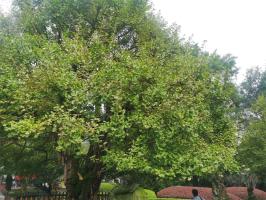Introduction
As humans continue to alter the natural landscape, it is important to consider the potential impact that planting trees can have on the ecosystems around them. Trees are an essential component of many ecosystems, providing habitat, controlling erosion, and absorbing carbon dioxide. However, planting trees can also have unintended consequences that must be carefully considered.
Positive impacts
There are many positive impacts that planting trees can have on ecosystems. One of the most important benefits is the creation of habitat for wildlife. As trees grow, they provide shelter and food for a variety of species, including birds, insects, and mammals. This can help to support biodiversity in the surrounding area.
Planting trees can also help to control erosion by stabilizing soil and preventing runoff. Trees' roots hold soil in place, which can reduce the amount of sediment that ends up in nearby waterways. In turn, this improves water quality for both wildlife and humans.
Another benefit of planting trees is their ability to absorb carbon dioxide. Trees are known to be one of the best natural ways to remove carbon dioxide from the atmosphere, making them an important tool in the fight against climate change.
Negative impacts
While planting trees can have many positive impacts, there are also potential negative consequences that must be considered. One potential issue is the impact that trees can have on water availability. Trees require water to grow, and if planted in an area where water is already scarce, they can exacerbate the problem. In addition, planting trees can often lead to changes in water flow patterns, which can have unintended consequences for nearby ecosystems and water users.
Another unintended consequence of planting trees is their impact on other native species. If non-native tree species are planted, they can outcompete native species for resources such as water and sunlight, reducing the overall biodiversity of the area. Additionally, trees can attract non-native pests or diseases that can have negative impacts on nearby ecosystems.
Considerations for planting trees
When considering planting trees, it is important to carefully evaluate the potential impacts on the surrounding ecosystem. This may involve conducting an environmental impact assessment to determine the potential impacts on water resources, soil, and native species. In addition, it may be important to choose native tree species that are adapted to the local climate and soil conditions.
Another important consideration is the location of the tree planting. Planting trees in areas that have experienced deforestation can help to restore important habitat and mitigate the impacts of climate change. However, planting trees in areas that are already rich in biodiversity may have unintended negative impacts on the native species that inhabit those areas.
Conclusion
Planting trees can have both positive and negative impacts on the ecosystems around them. While they can provide important habitat, control erosion, and absorb carbon dioxide, their impact on water availability and native species must be carefully considered. By conducting environmental impact assessments and carefully choosing the location and species of trees, it is possible to plant trees in a way that has a positive impact on the surrounding ecosystem.

 how many times do yo...
how many times do yo... how many planted tre...
how many planted tre... how many pine trees ...
how many pine trees ... how many pecan trees...
how many pecan trees... how many plants comp...
how many plants comp... how many plants can ...
how many plants can ... how many plants and ...
how many plants and ... how many pepper plan...
how many pepper plan...






























